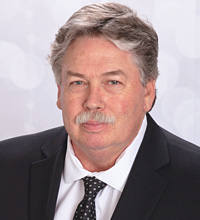Thoughts on Selling a Team Leadership Strategy Plan to Family Businesses
Thanks to this week’s contributor, FFI Fellow JP Roy, for his article, “Thoughts on Selling a Team Leadership Strategy Plan to Family Businesses.” See what you think as he explores “being a pathfinder, building a leadership plan, and applying pertinent strategies in overlapping areas.”
Everyone knows, or says he knows, that in order to sell a family business advisor’s or consultant’s services, we must sell ourselves. This claim is a true statement and known axiom in the sales, business and organizational behavior arenas. Here’s how it might apply to professionals in our field.
Become a pathfinder
People buy or purchase goods and services from people they know, people they like and more importantly, people they trust. The bottom line is that we have to build a relationship that encompasses these three truths in order to help the family, the family business and its ownership build a strategic team leadership plan. Quality work takes time, and there are no short-cuts to this initial relationship building and situation analysis process.
Our first goal is to get a feel for the situation and what challenges the family business is facing. We need to know the history of the organization from the perspective of all the stakeholders. Our initial meeting should be with the main decision-makers. Later in this process, we should meet with other members of the family business and the family. We need to get to know our client in its entirety in order to be helpful.
We have to be good listeners. Listening to their needs and concerns will help us determine what they are seeking and how we can help them find solutions to the complex issues and problems that the family business encounter. Basically, we are building a needs analysis and preliminary findings to determine the scope of work and to create an action plan with a cost analysis for the owners and leaders of the company (decision-makers).
Essentially, we become a pathfinder or trailblazer for the family firm to help find solutions for the family and the leadership team. They need to know that we have their best interests at heart and that we want to help them succeed and solve their own problems. By building trust we can become more effective through open, honest communication and team leadership building exercises.
Build a leadership plan
The family business owners, leadership, managers and family members must participate. Their participation will help create an organizational climate conducive for the establishment of a team leadership plan. The plan must be implemented in a timely, positive and productive manner. The goal is to build a leadership plan that creates cohesion, trust and shared goals. The organization will then be better prepared to achieve success and navigate obstacles that it encounters over time.
They need to know that the process will take time. We have to get their permission to ask easy and tough questions. We need to discuss the scope of work to be performed, where the meetings will take place, the time-lines, methods of conflict resolution, rules of engagement, goals for a strategic team leadership plan and their desired outcomes.
Additionally, anyone who has ever served in a leadership role knows that his or her success will depend on the ability to build strong relationships with colleagues, subordinates and team members.
The same is true for a family business and the family. The family social group may not be a team per se, but the family business, the owners and the family leaders should embrace good team leadership traits.
Apply pertinent strategies in overlapping areas
In order to be more effective, leaders and stewards for the family business, family business owners and the family must learn to separate family and business. However, application of pertinent team-building and leadership strategies should be applied in the overlapping areas of ownership, enterprise and family domains.
Some characteristics of a group are: [1]
- Goal Orientation: People joining together for some purpose
- Interdependent: People who have some type of relationship
- Interpersonal Interaction: People who communicate and interact
- Perception of Membership: Recognition of collective belonging
- Structured Relationships: Roles, rules, and norms controlling people
- Mutual Influence: Impacts that people have on one another
- Individual Motivation: Satisfaction of personal needs-membership
According to Hayes “social representation is the shared values, ideas, and beliefs that people have about the world,” and that “social identification refers to the recognition that a group exists separately from others.” It is a “cognitive and emotional process often viewing one’s group as better than other groups.” [2]
Family group dynamics certainly contain many of the same group characteristics listed above. The family dynamics can hinder or enhance team-building for a family business leadership team strategy. It is important for the leaders and owners of the family business and the family members to create an effective governance system to address any shortcomings in the family business team leadership strategy plan. All stakeholders should seek positive outcomes.
Levi and Slem (1995) studied factory production teams and engineering research and development teams to determine factors related to team success. They found the following factors: [3]
- Evaluation and rewards: Teams need fair and objective criteria for evaluation.
- Social relations: Teams need training in social skills so they can resolve conflicts and function smoothly.
- Organizational support: Management, the organizational system and the organizational culture must support the use of teams.
- Task characteristics: Teams need clear direction and goals, tasks that are appropriate for teamwork and work that is challenging and important.
- Leadership: Leaders need to facilitate team interactions and provide assistance to teams when problems occur.
In my view, leadership consists of hard work, ongoing improvement and relationship building that incorporates effective communication, mentorship and strong core values that build trust.
Leadership team-building exercises or organization can be broken down into decision-makers (CEO), leadership (managers/supervisors), owners (decision-makers), and family members (family councils). They should develop a mission statement and determine desired core values for their organization and its membership.
Concluding thoughts
Although the scope of this article does not allow for a complete discussion of the team-building process, it is important to point out that normally the stages are: Forming or Orientation (members getting to know each other), Storming or Conflict (disagreement about roles and procedures), Norming or Structure (establishment of rules and social relationships), Performing or Work (focus on completing tasks) and Adjourning or Dissolution (completion of task and end of work group). [4] [5]
In summary, it is important for family business advisors to sell themselves on a long-term basis, build trust and emphasize the important concept of a team leadership strategy. A team leadership strategy can have a tremendous impact on the family business, family ownership and family culture. The strategy often moves from distrust and dysfunction to cohesion and excellence on a performance and organizational basis.
A team leadership strategy can help play a long-term, important role in organizing the family business, the family business ownership and the family for successful governance, succession, growth and expansion for future generations. Take the time to sell this concept and watch your clients’ grow and prosper.
[1] Hackman, R. (1987). The design of work teams. In J. Lorsch (Ed.) Handbook of organizational behavior (pp. 315-342). Englewood Cliffs, NJ: Prentice Hall.
[2] Hayes, N. (1997) Successful team management. London, UK: International Thomason Business Press.
[3] Levi, D., & Slem, C. (1995). Team work in research and development organizations: The characteristics of successful teams. International Journal of Industrial Ergonomics, 16, 29-42.
[4] Tuckman, B., & Jensen, M. (1977). Stages of small group development revisited. Group and Organization Studies. 2, 419-427. SAGE.
[5] Levi, D., (2014) Group Dynamics for Teams. (pp.3-43) SAGE
About the contributor
 JP Roy, FFI Fellow, is a principal of Creative Human Resources Concepts, LLC in Mesa, AZ, a staffing agency focused in the aerospace, defense, oil & gas, energy and city government industries. He can be reached at [email protected].
JP Roy, FFI Fellow, is a principal of Creative Human Resources Concepts, LLC in Mesa, AZ, a staffing agency focused in the aerospace, defense, oil & gas, energy and city government industries. He can be reached at [email protected].




